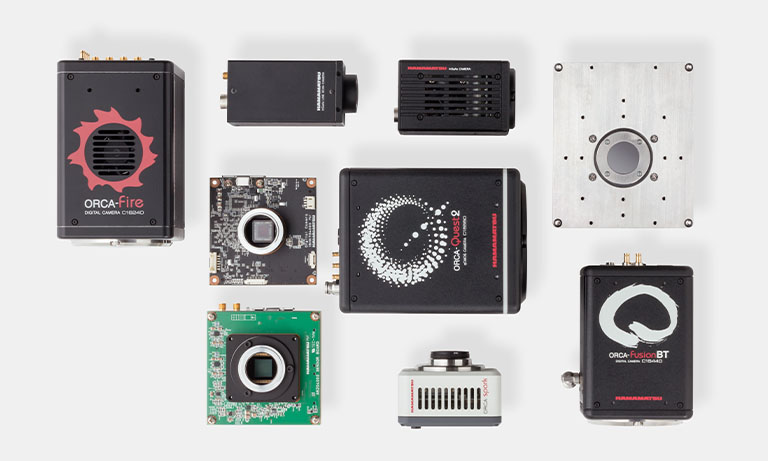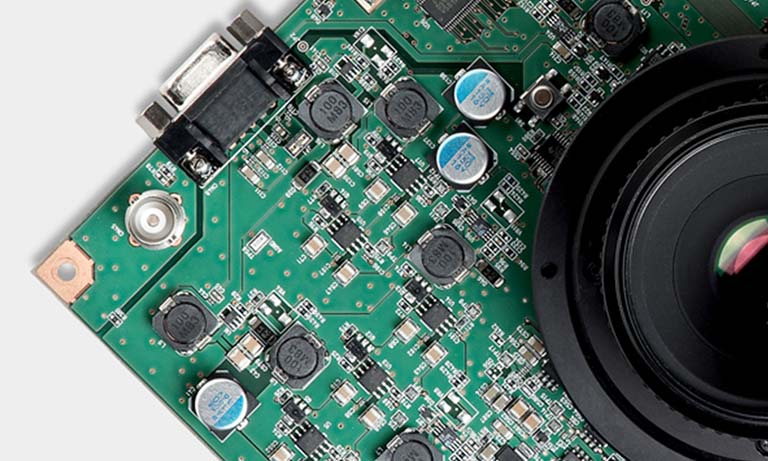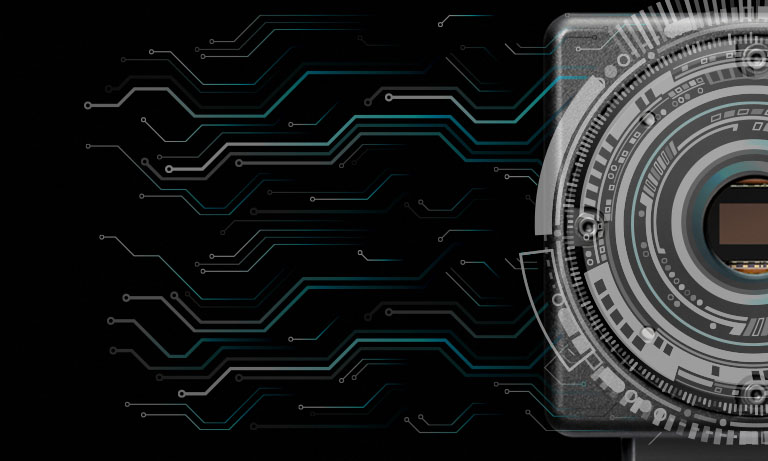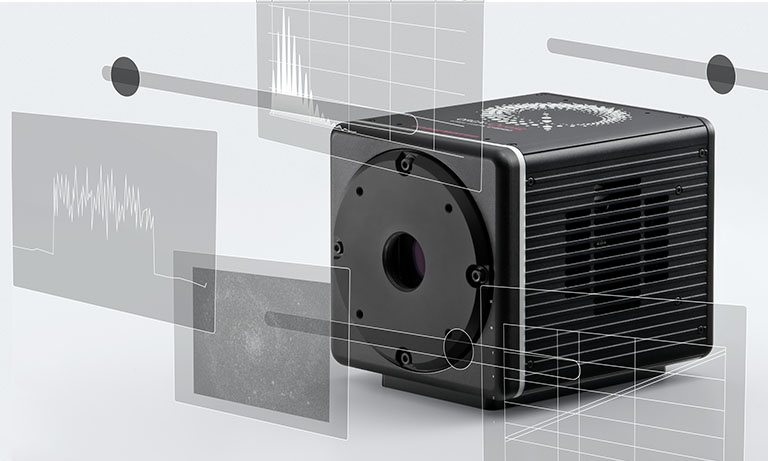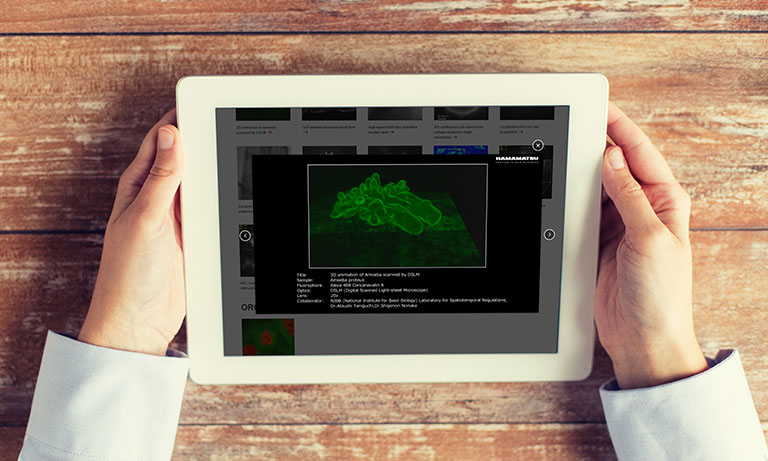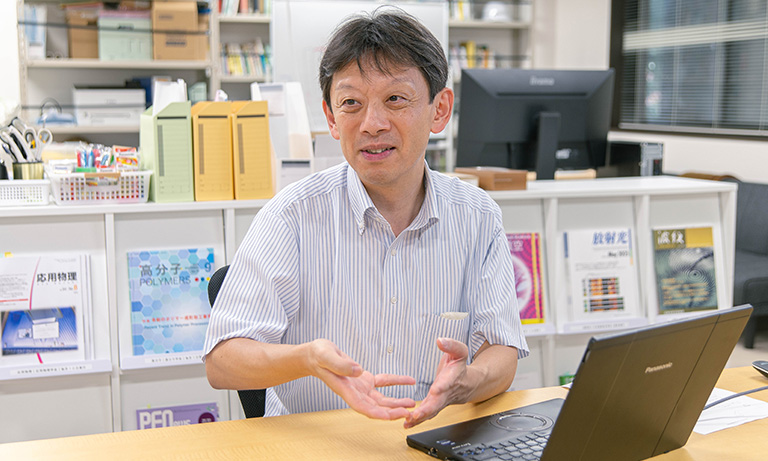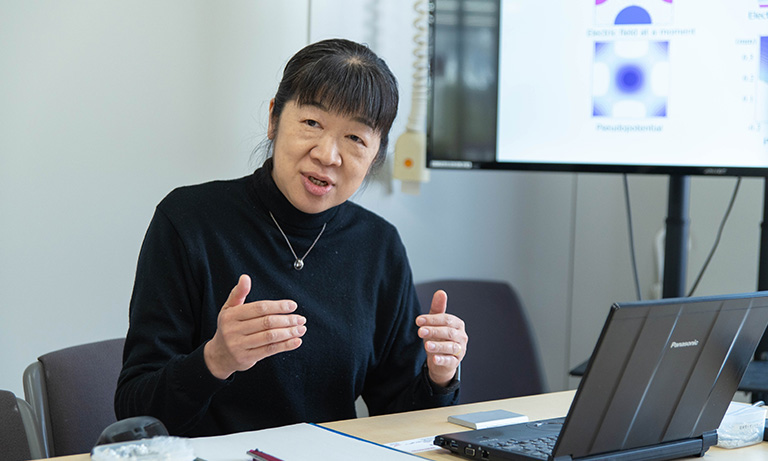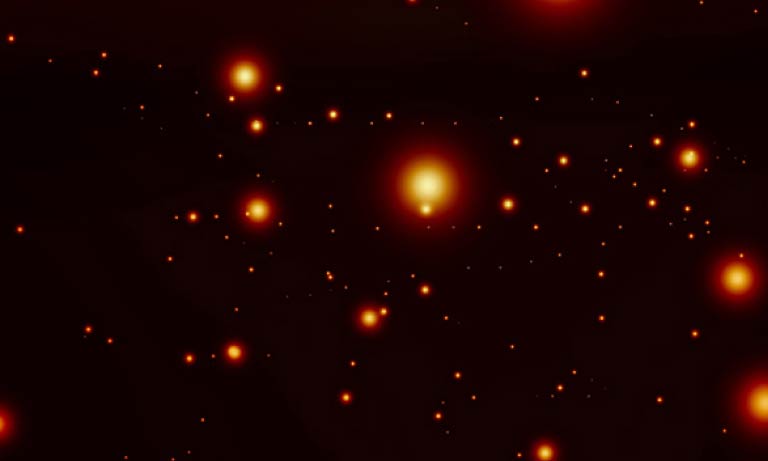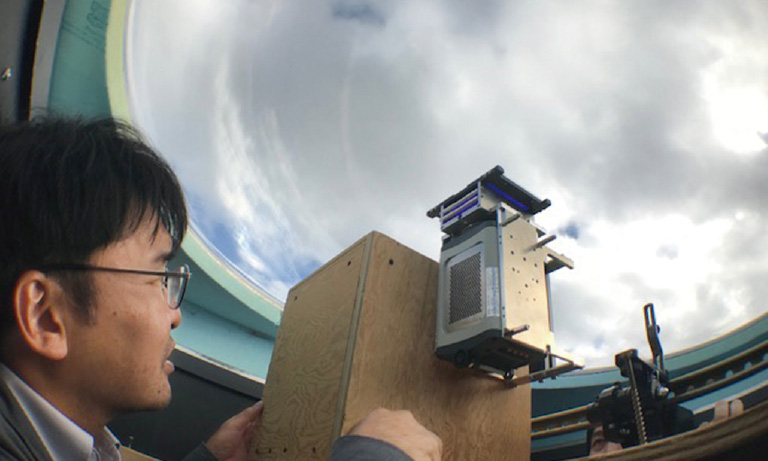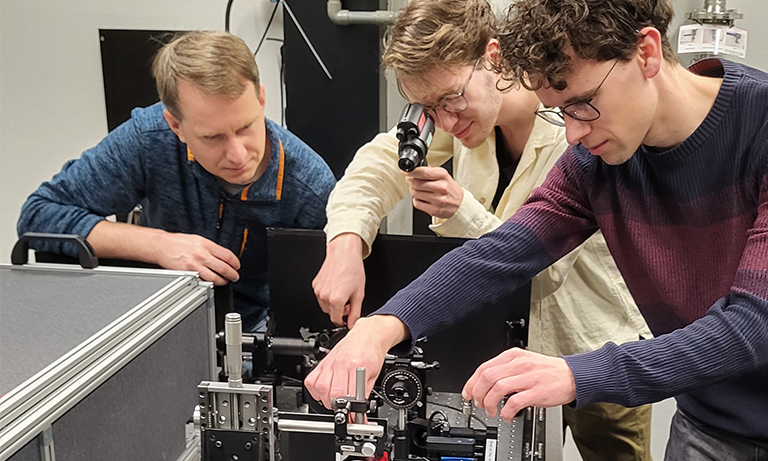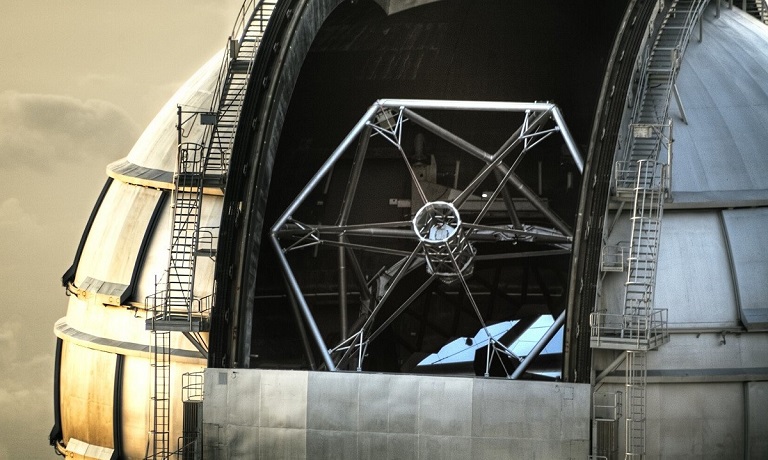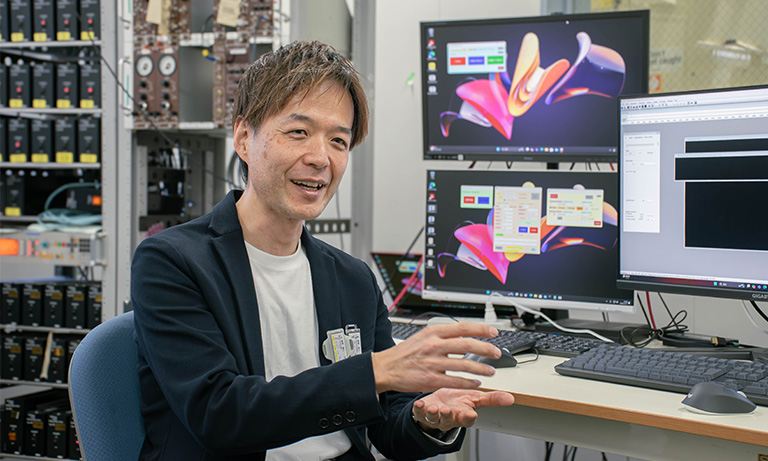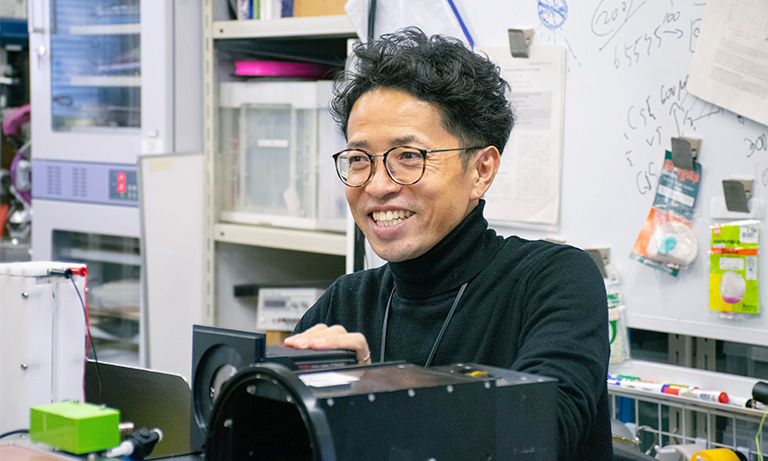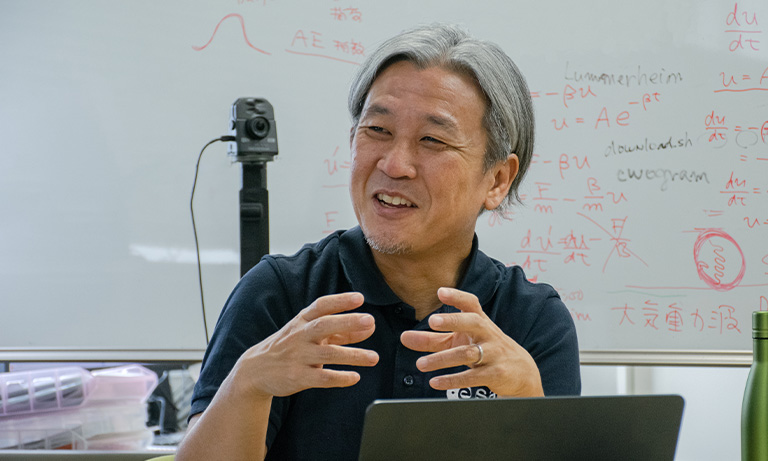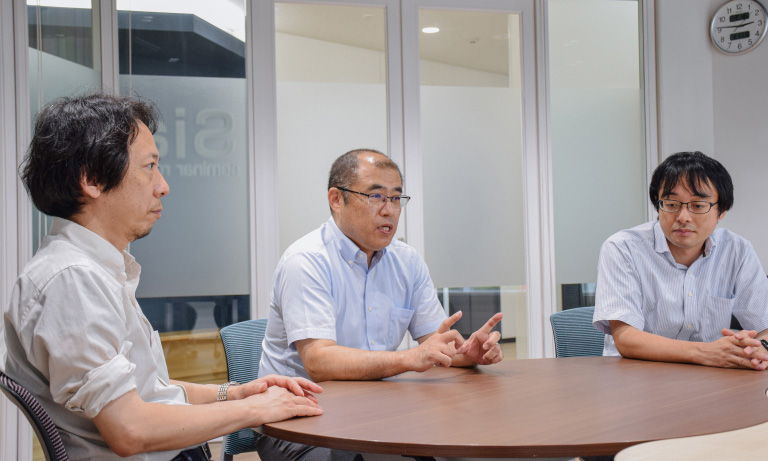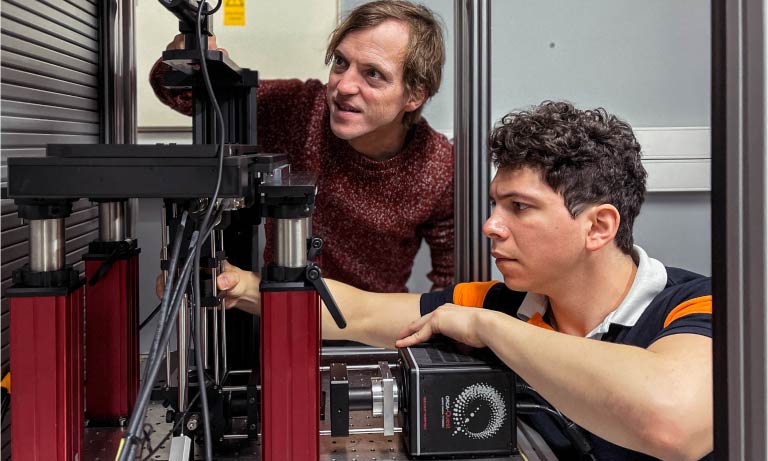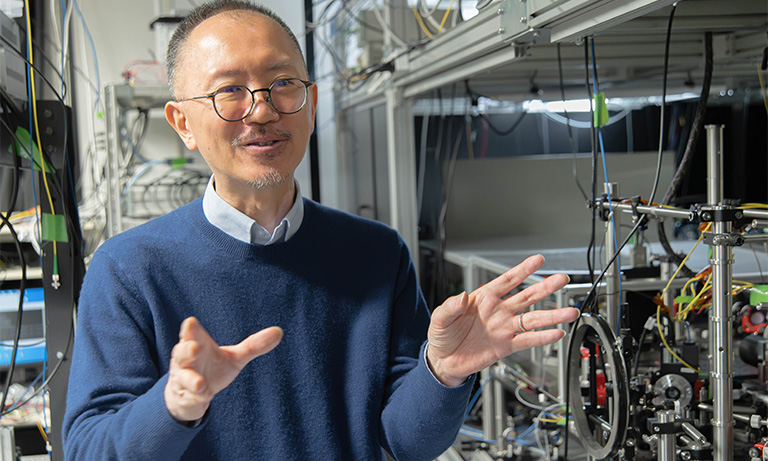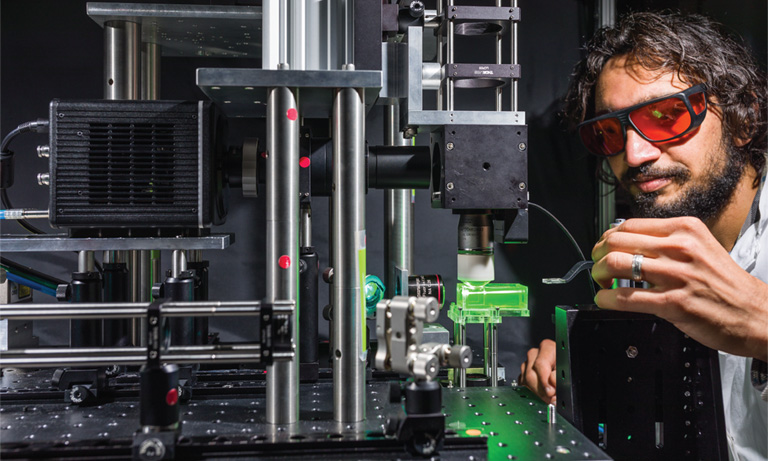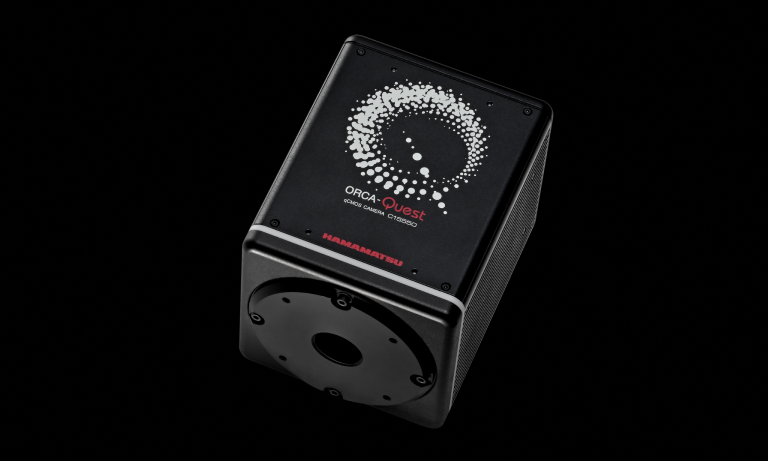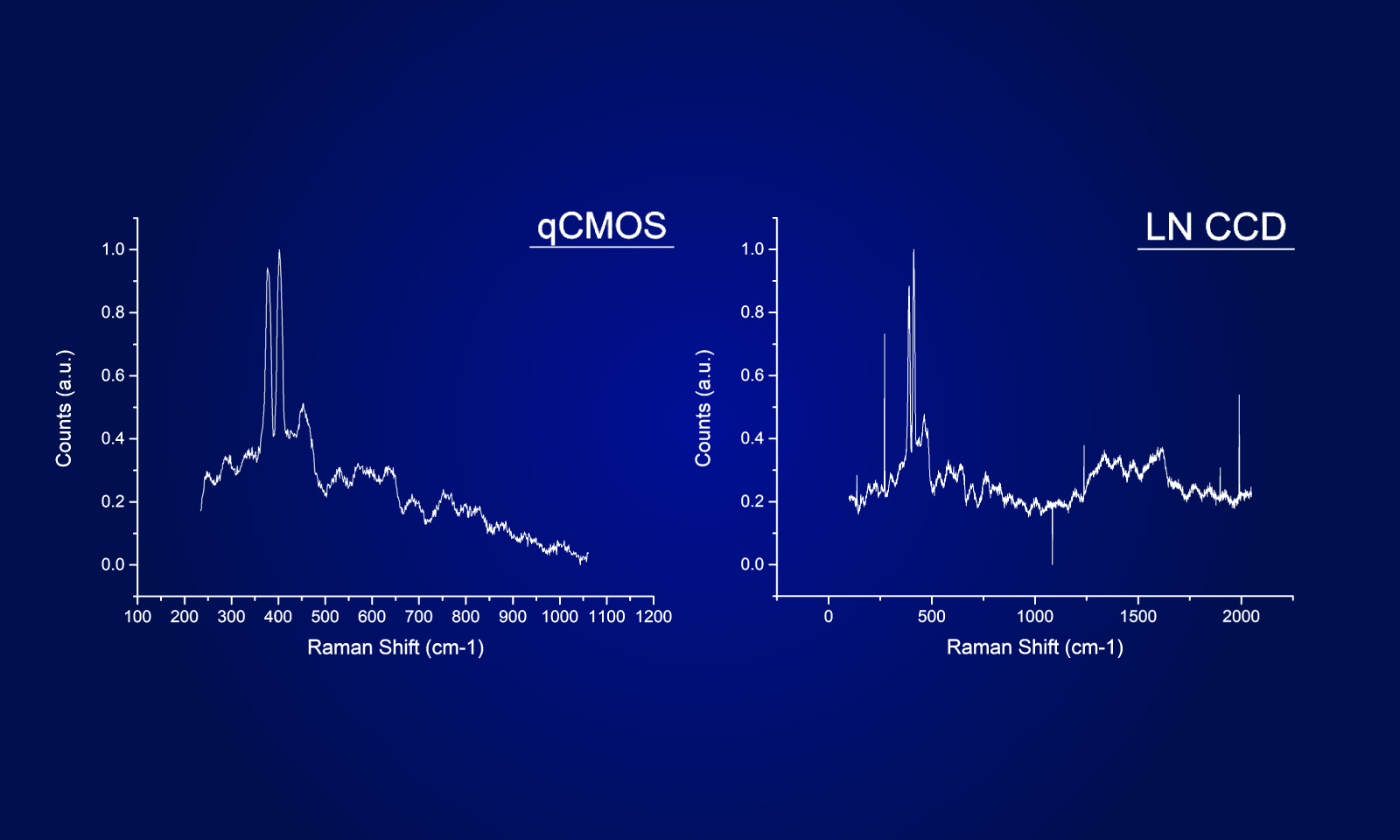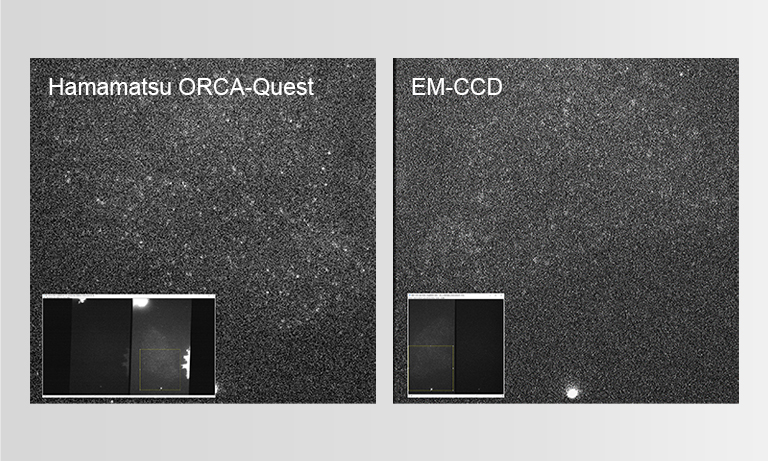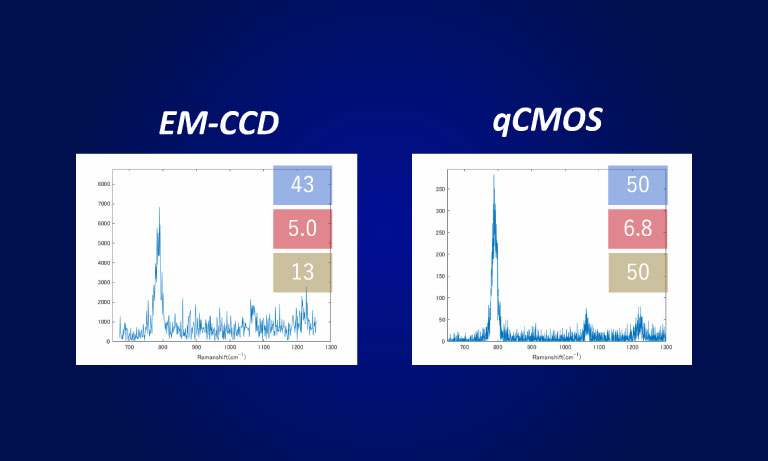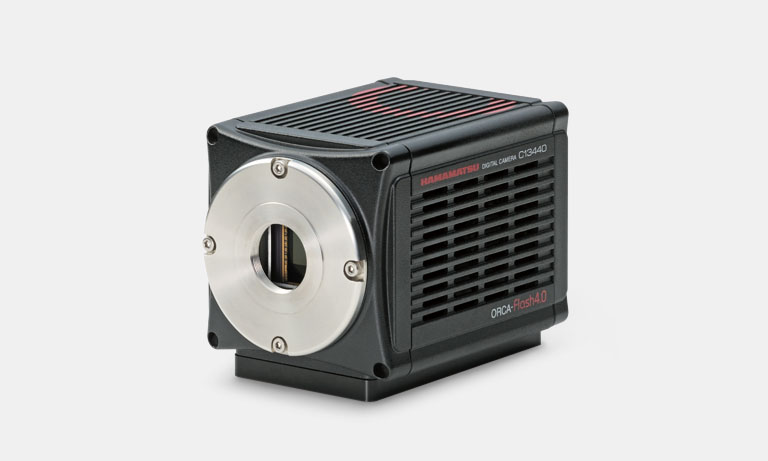Japan (EN)
Select your region or country.
Upper atmosphere imaging
Published on October 16, 2025
The upper atmosphere refers to the atmosphere around 80 km to 400 km in height. It is in the boundary region between the Earth’s atmosphere and outer space, and part of the atmosphere is in an ionized plasma state. The interaction between the plasma and the atmosphere causes auroras in polar atmosphere in both hemispheres. In the mid and low latitudes, there is also a luminous phenomenon called nighttime airglow.
In a word, “observation of aurora” means that there are various types of aurora and various points to observe. It is a very diverse field as a research theme, and not only is an aurora mysterious in appearance, but the phenomena are not yet fully understood? As a result, it is said to be a mysterious phenomenon.
This time, we asked Professor Yoshizumi Miyoshi of the Institute for Space-Earth Environmental Research, Nagoya University, who is working on high-speed imaging of the luminescence phenomenon occurring in the brilliance of the aurora, about his measurements of the dynamics of the upper atmosphere and the importance of high sensitivity, high resolution, and high speed imaging.
Aurora is a clue to what is happening in outer space
-Can you tell us what you can learn by observing the aurora, and the purpose of the observation?
Aurora is a phenomenon in which electrons and ions in outer space fall into the upper atmosphere of the Earth and emit light. Therefore studying the brightness, movement and shape of the aurora can give us clues to what is happening in outer space. There is a long history of aurora observations, within this history new devices to aid observation have been introduced, such as cameras, CCDs, EM-CCDs and CMOS.
The era of high-speed precision aurora observation has come, and we are discovering more and more drastic changes in the aurora and fine structures that cannot be seen with the naked eye. In other words, the fact that there is a mechanism that creates such fast changes and small changes in outer space leads to an understanding that such a new mechanism is occurring in outer space. Of course, auroras are beautiful and enjoyable to look at, but it is already essential for space research to chase fast, small, and faint luminescence that occur within these phenomena, which are invisible to the eye. I feel the arrival of a new era through cutting-edge aurora research.
To briefly introduce the efforts of our research group, for example, there is a satellite called Arase, which was launched by JAXA in 2016, and it observes the variations of electrons and ions, called plasma, as well as fluctuations of electric and magnetic fields, called plasma waves, in space. Currently, an EM-CCD camera is observing the aurora glowing in the upper atmosphere, which is connected to the Arase satellite by magnetic field lines. By combining satellite and ground-based observations, we are investigating the relationship between auroras observed by the EM-CCD camera and phenomena occurring in space; for example, “What is happening in space when this kind of aurora is observed?” We have been continuously imaging auroras at a speed of 100 Hz using the EM-CCD camera, and we are seeing a world that we could only see at this high speed, so we hope to clarify the mechanism that produces such phenomena.
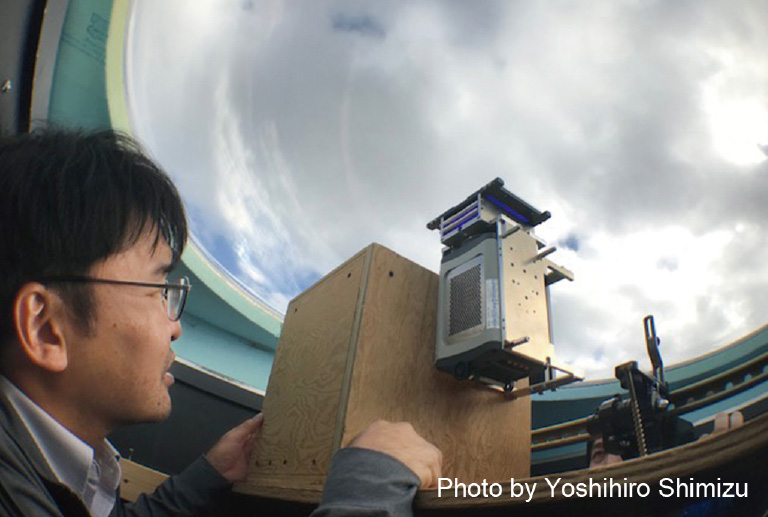
Observation (camera: ImagEM® X2 EM-CCD camera)
Faster, finer, and wider field of view. A camera that evolves with the progress of research is needed
-You have told us about the history of the improvement of camera detection performance as research progressed. Is there anything you want to see in the evolution of cameras for current and future research?
Of course, what to look at in the aurora depends on researchers, but I think there are two major factors. The first is the direction of “faster, finer, higher resolution and higher time resolution”. On the other hand, if you pursue such a direction, you will end up with a narrow field of view, even though it has high temporal resolution and spatial resolution. The world is entering the era of 4K displays and 8K, and I would like to aim for the same thing with aurora observation, and would like to have a camera that makes such things possible.
The other is that aurora is a phenomenon that occurs in various places on the earth, so we would like to deploy cameras at multiple points so that the fields of view of each camera overlap, and connect them all with a network to capture images with high temporal and spatial resolution. For example, the aurora that can be seen from a single location is about 500 km square. However, even if you go to the next longitude, or south or north, you may see the aurora continuously. In order to observe such aurora, recently, a method called a network has become highly advanced, in which many cameras are placed here and there to observe auroras on global scale. We are thinking not only to take images with high spatial resolution and high temporal resolution, but also to observe the fluctuation of the aurora on a pan-global scale by laying out cameras in a row. To do that, we need to have good-performance cameras in many places, and I hope that will be possible.
“Space weather forecast” to work on as basic research
-You have been giving lectures for high school students with the word "space weather". Do you see such things in real time in your daily work?
Since I work at a university, I am doing basic research on space weather and space weather forecasts. Ordinary weather forecasts are sent by the Japan Meteorological Agency, but in the case of space weather, they are sent by the National Institute of Information and Communications Technology in Japan. We are conducting basic research that leads to higher prediction accuracy, and research on changes in the space environment. In that research, we analyze data from artificial satellites and ground observations, perform simulations, and install EM-CCD and CMOS cameras in Scandinavia and North America for observation.
It is often said that auroras are “a manifestation of space weather”. For example, when there is an explosion on the sun, a large amount of plasma, much larger than the Earth, flies from the sun to the Earth.
When this happens, the space around the Earth is disturbed and becomes a “storm”, which may affect satellites and communications.
When it gets really bad, it can affect aircrafts flying above us, so we sometimes have to take measures such as lowering the latitude of our flights because aircraft flying over the North Pole are likely to be affected. At this time, the aurora may be stronger than usual, and may also be seen at lower latitudes where it is not usually seen.
The phenomena happening on Earth and in space are all connected, so studying changes in the aurora is directly related to understanding how the connection between the Sun and Earth is changing and what is happening in space. It’s not just studying the aurora.
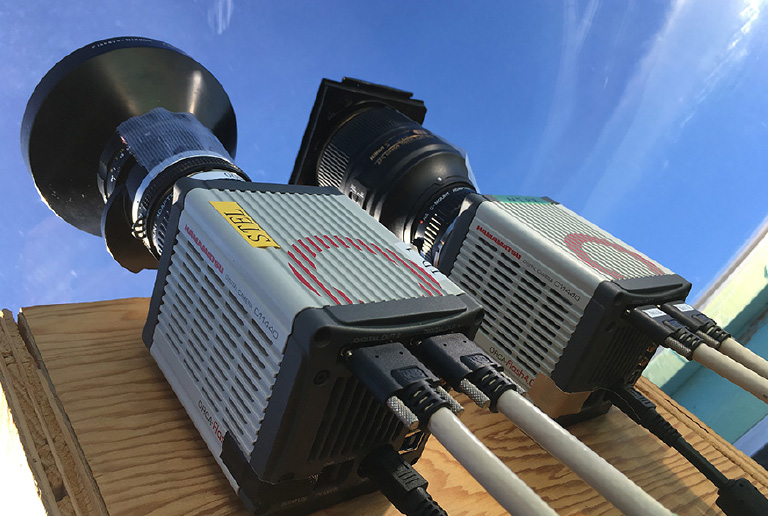
Our camera installed at the aurora observatory at the Poker Flat Research Range of the University of Alaska
Researcher profile
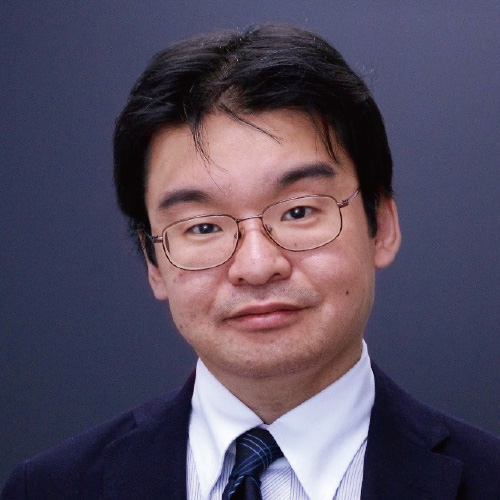
Yoshizumi Miyoshi, Ph.D.
Professor, Institute for space and earth environment, Nagoya University.
After graduating from the graduate school of science, Tohoku University, he was a research fellow of the Japan Society for the Promotion of Science (JSPS) and a visiting scholar at the University of New Hampshire, USA.
From 2004, he was a research associate and assistant professor at the Institute for Solar-Terrestrial Environmental Studies (now the Institute for Space and Earth Studies), Nagoya University, and then an associate professor before assuming his current position in 2018.
Project scientist of the JAXA ERG (Arase) satellite project.
Miyoshi specializes in space physics and terrestrial and planetary magnetospheric physics. He has been engaged in the analysis and simulation of satellite observation data and ultrafast imaging observations of aurorae.
He received the Young Scientist Award from the Minister of Education, Culture, Sports, Science and Technology, the Japan Geoscience Union’s Earth and Planetary Science Promotion Nishida Award, Society of Geomagnetism and Earth, Planetary and Space Sciences Tanakadate Award, the Inoue Science Award, and others.
*The content presented on this page is based on an interview conducted in January 2021.
Related product
Digital CMOS camera with sCMOS sensor designed for scientific research use. It has improved resolution and sensitivity (especially in NIR region) comparing with ORCA-Flash4.0. (82 % peak QE)
Other case studies
- Confirmation
-
It looks like you're in the . If this is not your location, please select the correct region or country below.
You're headed to Hamamatsu Photonics website for JP (English). If you want to view an other country's site, the optimized information will be provided by selecting options below.
In order to use this website comfortably, we use cookies. For cookie details please see our cookie policy.
- Cookie Policy
-
This website or its third-party tools use cookies, which are necessary to its functioning and required to achieve the purposes illustrated in this cookie policy. By closing the cookie warning banner, scrolling the page, clicking a link or continuing to browse otherwise, you agree to the use of cookies.
Hamamatsu uses cookies in order to enhance your experience on our website and ensure that our website functions.
You can visit this page at any time to learn more about cookies, get the most up to date information on how we use cookies and manage your cookie settings. We will not use cookies for any purpose other than the ones stated, but please note that we reserve the right to update our cookies.
1. What are cookies?
For modern websites to work according to visitor’s expectations, they need to collect certain basic information about visitors. To do this, a site will create small text files which are placed on visitor’s devices (computer or mobile) - these files are known as cookies when you access a website. Cookies are used in order to make websites function and work efficiently. Cookies are uniquely assigned to each visitor and can only be read by a web server in the domain that issued the cookie to the visitor. Cookies cannot be used to run programs or deliver viruses to a visitor’s device.
Cookies do various jobs which make the visitor’s experience of the internet much smoother and more interactive. For instance, cookies are used to remember the visitor’s preferences on sites they visit often, to remember language preference and to help navigate between pages more efficiently. Much, though not all, of the data collected is anonymous, though some of it is designed to detect browsing patterns and approximate geographical location to improve the visitor experience.
Certain type of cookies may require the data subject’s consent before storing them on the computer.
2. What are the different types of cookies?
This website uses two types of cookies:
- First party cookies. For our website, the first party cookies are controlled and maintained by Hamamatsu. No other parties have access to these cookies.
- Third party cookies. These cookies are implemented by organizations outside Hamamatsu. We do not have access to the data in these cookies, but we use these cookies to improve the overall website experience.
3. How do we use cookies?
This website uses cookies for following purposes:
- Certain cookies are necessary for our website to function. These are strictly necessary cookies and are required to enable website access, support navigation or provide relevant content. These cookies direct you to the correct region or country, and support security and ecommerce. Strictly necessary cookies also enforce your privacy preferences. Without these strictly necessary cookies, much of our website will not function.
- Analytics cookies are used to track website usage. This data enables us to improve our website usability, performance and website administration. In our analytics cookies, we do not store any personal identifying information.
- Functionality cookies. These are used to recognize you when you return to our website. This enables us to personalize our content for you, greet you by name and remember your preferences (for example, your choice of language or region).
- These cookies record your visit to our website, the pages you have visited and the links you have followed. We will use this information to make our website and the advertising displayed on it more relevant to your interests. We may also share this information with third parties for this purpose.
Cookies help us help you. Through the use of cookies, we learn what is important to our visitors and we develop and enhance website content and functionality to support your experience. Much of our website can be accessed if cookies are disabled, however certain website functions may not work. And, we believe your current and future visits will be enhanced if cookies are enabled.
4. Which cookies do we use?
There are two ways to manage cookie preferences.
- You can set your cookie preferences on your device or in your browser.
- You can set your cookie preferences at the website level.
If you don’t want to receive cookies, you can modify your browser so that it notifies you when cookies are sent to it or you can refuse cookies altogether. You can also delete cookies that have already been set.
If you wish to restrict or block web browser cookies which are set on your device then you can do this through your browser settings; the Help function within your browser should tell you how. Alternatively, you may wish to visit www.aboutcookies.org, which contains comprehensive information on how to do this on a wide variety of desktop browsers.
5. What are Internet tags and how do we use them with cookies?
Occasionally, we may use internet tags (also known as action tags, single-pixel GIFs, clear GIFs, invisible GIFs and 1-by-1 GIFs) at this site and may deploy these tags/cookies through a third-party advertising partner or a web analytical service partner which may be located and store the respective information (including your IP-address) in a foreign country. These tags/cookies are placed on both online advertisements that bring users to this site and on different pages of this site. We use this technology to measure the visitors' responses to our sites and the effectiveness of our advertising campaigns (including how many times a page is opened and which information is consulted) as well as to evaluate your use of this website. The third-party partner or the web analytical service partner may be able to collect data about visitors to our and other sites because of these internet tags/cookies, may compose reports regarding the website’s activity for us and may provide further services which are related to the use of the website and the internet. They may provide such information to other parties if there is a legal requirement that they do so, or if they hire the other parties to process information on their behalf.
If you would like more information about web tags and cookies associated with on-line advertising or to opt-out of third-party collection of this information, please visit the Network Advertising Initiative website http://www.networkadvertising.org.
6. Analytics and Advertisement Cookies
We use third-party cookies (such as Google Analytics) to track visitors on our website, to get reports about how visitors use the website and to inform, optimize and serve ads based on someone's past visits to our website.
You may opt-out of Google Analytics cookies by the websites provided by Google:
https://tools.google.com/dlpage/gaoptout?hl=en
As provided in this Privacy Policy (Article 5), you can learn more about opt-out cookies by the website provided by Network Advertising Initiative:
http://www.networkadvertising.org
We inform you that in such case you will not be able to wholly use all functions of our website.
Close
